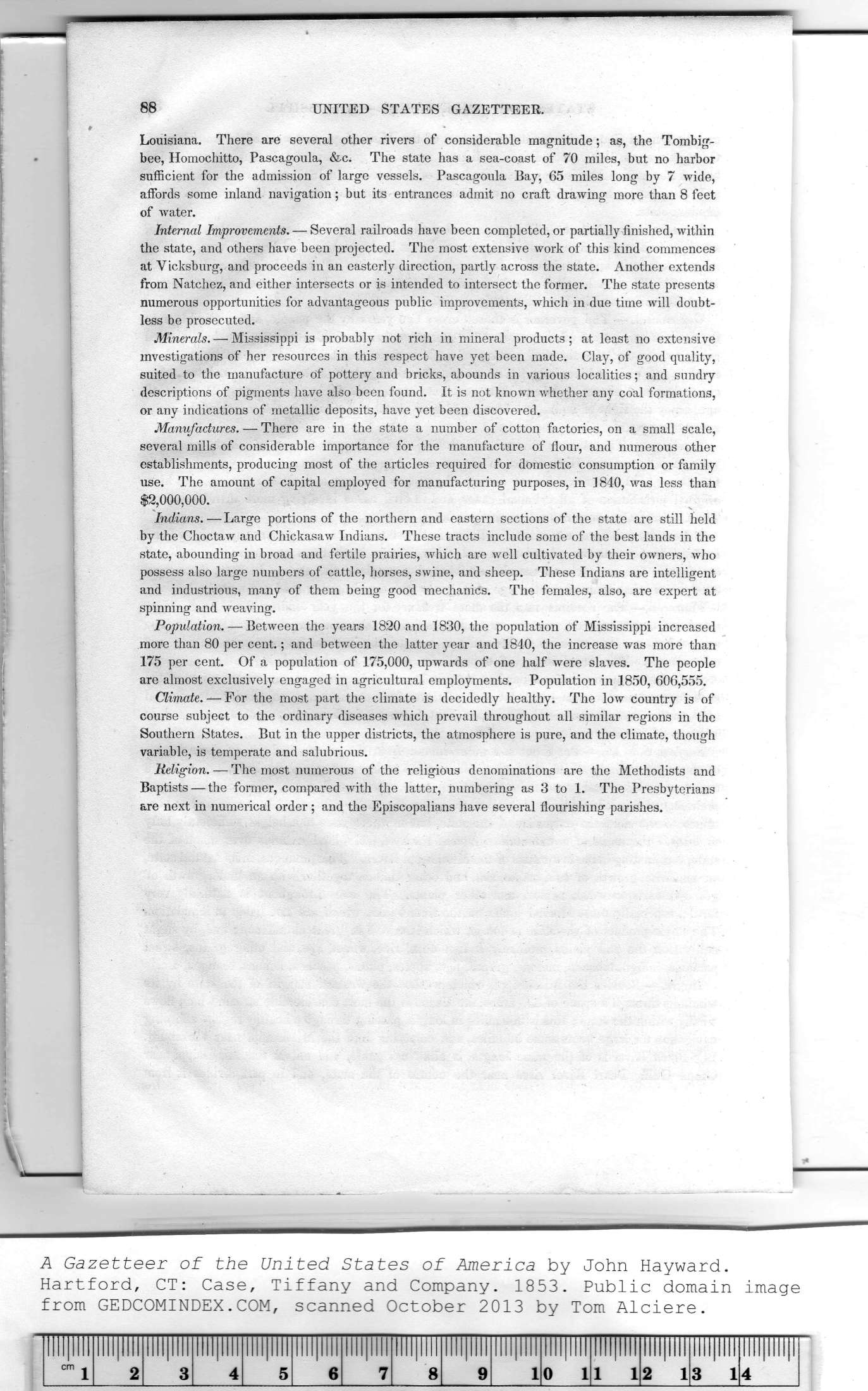|
|
Note: Ctrl and + increases the font size of the text below, Ctrl and - decreases it, and Ctrl and 0 resets it to default size.
88 UNITED STATES GAZETTEER.
Louisiana. There are several other rivers of considerable magnitude; as, the Tombig-
bee, Homochitto, Pascagoula, &c. The state has a sea-coast of 70 miles, but no harbor
sufficient for the admission of large vessels. Pascagoula Bay, 65 miles long by 7 wide,
affords some inland navigation; but its entrances admit no craft drawing more than 8 feet
of water.
Internal Improvements. — Several railroads have been completed, or partially finished, within
the state, and others have been projected. The most extensive work of this kind commences
at Vicksburg, and proceeds in an easterly direction, partly across the state. Another extends
from Natchez, and either intersects or is intended to intersect the former. The state presents
numerous opportunities for advantageous public improvements, which in due time will doubt-
less be prosecuted.
Minerals. — Mississippi is probably not rich in mineral products; at least no extensive
investigations of her resources in this respect have yet been made. Clay, of good quality,
suited to the manufacture of pottery and bricks, abounds in various localities; and sundry
descriptions of pigments have also been found. It is not known whether any coal formations,
or any indications of metallic deposits, have yet been discovered.
Manufactures. — There are in the state a number of cotton factories, on a small scale,
several mills of considerable importance for the manufacture of flour, and numerous other
establishments, producing most of the articles required for domestic consumption or family
use. The amount of capital employed for manufacturing purposes, in 1840, was less than
$2,000,000.
Indians. — Large portions of the northern and eastern sections of the state are still held
by the Choctaw and Chickasaw Indians. These tracts include some of the best lands in the
state, abounding in broad and fertile prairies, which are well cultivated by their owners, who
possess also large numbers of cattle, horses, swine, and sheep. These Indians are intelligent
and industrious, many of them being good mechanics. The females, also, are expert at
spinning and weaving.
Population. — Between the years 1820 and 1830, the population of Mississippi increased
more than 80 per cent.; and between the latter year and 1840, the increase was more than
175 per cent. Of a population of 175,000, upwards of one half were slaves. The people
are almost exclusively engaged in agricultural employments. Population in 1850, 606,555.
Climate. — For the most part the climate is decidedly healthy. The low country is of
course subject to the ordinary diseases which prevail throughout all similar regions in the
Southern States. But in the upper districts, the atmosphere is pure, and the climate, though
variable, is temperate and salubrious.
Religion. — The most numerous of the religious denominations are the Methodists and
Baptists — the former, compared with the latter, numbering as 3 to 1. The Presbyterians
are next in numerical order ; and the Episcopalians have several flourishing parishes.
A Gazetteer of the United States of America by John Hayward.
Hartford, CT: Case, Tiffany and Company. 1853. Public domain
|
